Pre-winter to-do list
✅ Squirrels begone: Check for even the slightest sign that a squirrel is planning a break-in to your shed. Squirrels can chew through almost anything — but not galvanized steel hardware cloth fencing.
Keep a roll handy at all times. A half-inch square mesh weave is ideal.
When it was discovered this fall that a squirrel was chewing through one of the walls of my shed, I used hardware cloth fencing to cover the openings, secured tightly to the wall using a staple gun.
Foiled again, said the cheeky squirrel!
✅ Protect flower bulbs: Hardware cloth fencing is also useful in deterring squirrels from digging up flower bulbs. Use wire cutters or snips to cut through heavy-gauge wire. It is recommended to wear protective eyewear. Cut a length of wire that is larger on all sides than the area where you planted flower bulbs.
Cut each corner at an angle and fold each edge to a 10-cm depth so that the wire mesh resembles a box lid. Lay it on top of your planting area. Push the folded edges into the soil and cover with leaf mulch or bark chips.
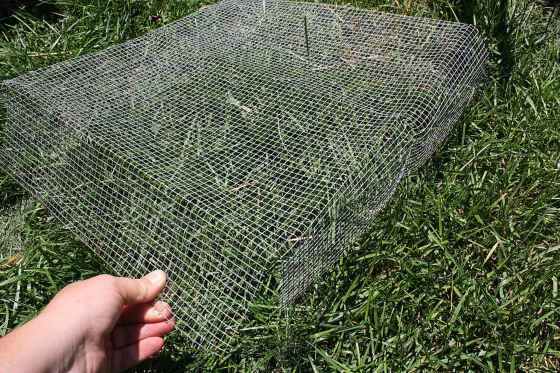
A ½-inch square mesh weave is ideal for hardware cloth fencing to prevent squirrels. (Colleen Zacharias)
✅ Apply tree wrap to young trees: To prevent voles, mice, and rabbits from feeding on the lower bark of young or newly planted trees, apply a white plastic tree wrap around the trunk. These can be removed in the spring and reused next winter.
✅ Store insecticides and fertilizers: If you use commercial insecticides or fertilizers that are in a liquid form, it’s time to bring these products indoors for the winter.
Freezing can cause the active components in some liquid products to separate, coagulate or crystallize.
Granular fertilizers such as bone meal or rock phosphate or fungicides that are in a powder form can be stored in a dry area of a garage or shed for the winter. However, it’s important to protect them from moisture and high humidity, which can result in clumping.
Degraded products lose their effectiveness. Protect your investment!
✅ Write it down: Quick, before you forget: what was the name of that plant you must have for your garden next year?
Is 2026 the year that you promise to finally divide a favourite but neglected perennial?
What was it again that you noticed about one of your plants or areas of your garden that needs to be remedied?
Make a to-do list on your phone or computer, or start a garden journal.
How about a journal that is made from apples? The gift shop at The Leaf in Assiniboine Park offers a sustainable journal that is eco-friendly and organic to the core. A 100 per cent post-consumer product, the journal uses pulp for paper and peels for its covers.

This journal is made from apple peels and pulp. (Assiniboine Park Conservancy)
✅ Leave the leaves: It’s too late in the season to begin raking up small piles of leaves that have blown into pockets of your garden. Avoid reaching for a leaf vacuum to suck up leaves tucked into nooks and crannies.
Many different types of pollinators overwinter in leaf litter. This is their blanket — don’t pull it off!
Make the most of autumn rainfall
After a smoky, hot, dry summer, Winnipeggers welcomed autumn’s rainfall with a sigh of relief. But some parts of southern Manitoba, such as Steinbach, received torrential rains this fall, which saturated soils and left pools of standing water.
“It’s making harvest and spreading of compost a real challenge,” said Steinbach gardener Elsie Kathler in late October.
But on Oct. 25, Gimli resident Allison Atkey wrote to say she had a different concern.
“I am wondering whether the recent rain is actually enough for my young trees or if I should do a fall watering. While it rained all day recently, did we actually get enough (moisture) to last the winter?”
Newly planted trees or shrubs and perennials benefit from a deep watering at the time of planting, followed by weekly watering right up until the first deep freeze. You are quite right that rainfall is not always enough to reach the root zone of plants.
Wind direction, soil conditions, density of vegetation and competition from nearby tree roots are all factors that can prevent rainfall from reaching the roots of plants.
Trees Winnipeg recommends the following steps to determine if your soil has adequate moisture:
- Push a spade into the ground to the depth of the blade and take a handful of soil in your hands.
- Squeeze the soil in the palm of your hand. If you can squeeze water from the soil, you have too much water. If the soil falls apart and won’t clump, the soil is dry. If the soil holds together when squeezing it, then the moisture is adequate.
- Place a five- to seven-centimetre layer of organic mulch (shredded leaves, bark chips) around the base of your trees (but not touching the bark). This layer will help to promote good drainage by improving water flow at the surface and within the soil as it decomposes.
How late can I plant?
Perennials, shrubs, and trees can be successfully planted in the garden prior to freeze-up. Typically, planting continues throughout September and into October so long as mild conditions permit.
This year, the autumn season has provided extended planting opportunities for home gardeners and landscape contractors. Here we are in early November and garden soils are still warm and moist.
The forecast for Winnipeg and surrounding areas from now until mid-November calls for temperatures that will be above or slightly below freezing.
As long as the ground is not frozen hard, you can install hardy perennials, trees, and shrubs in your garden and get a head start on spring!
Jen Salamon, a St. Vital gardener, purchased several plants during the summer for a new garden bed that was planned for her yard as part of a landscape project. The project, however, took several months to complete and was not finished until the end of October.
On October 30, Salamon was finally able to install her plants. She planted three hydrangea tree forms, three Fire Light Tidbit panicle hydrangea shrubs, three Itoh peonies, and some perennials. A layer of bark chips around the base of each plant will help to protect the root zone for the winter.
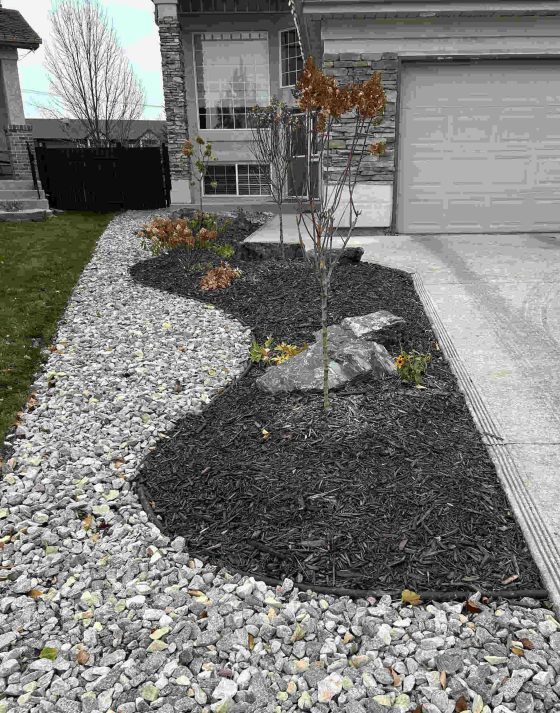
Jen Salamon planted a new garden bed on Oct. 30. (Susan Southern)
Ornamental grasses make good neighbours
Using shrubs instead of a fence along a property line has many advantages. Shrubs provide colour, texture and all-season interest.
This summer, I saw several examples where ornamental grasses were used instead of shrubs to create a living screen between two houses.
A mass planting of ornamental grasses might even be a friendlier barrier than a dense row of shrubs because the tall stems, held well above the foliage, move gracefully in the slightest breeze. The feathery seed heads soften a space and provide visual interest.
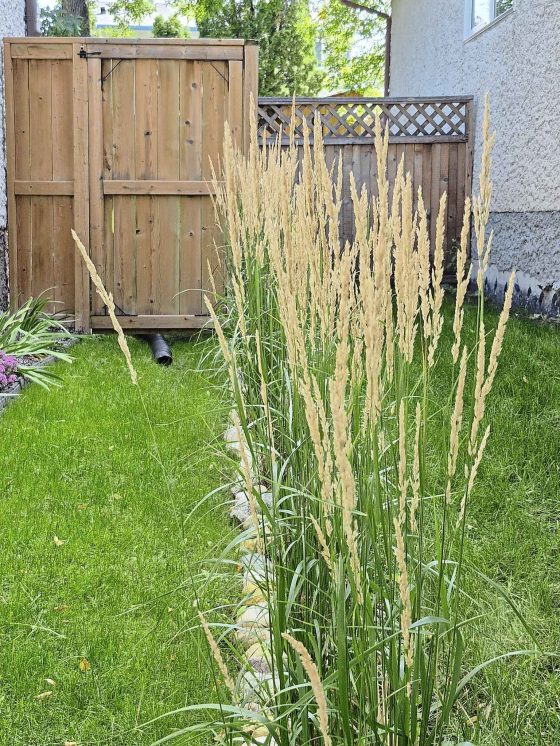
Ornamental grass makes for a friendly living fence along a property line. (Colleen Zacharias)
Ornamental grasses provide an essential habitat for pollinators such as butterflies. The seedheads supply a food source for overwintering birds.
In each of the examples I came across, it was Calamagrostis x acutiflora Karl Foerster feather reed grass that was chosen for the front yard privacy screens.
A grass for cooler seasons, Karl Foerster grows to a mature height of 1.2 to 1.5 metres.
Ideally suited for mass planting, Karl Foerster prefers full sun but is tolerant of part shade conditions.
I can’t explain our infatuation with Karl Foerster but he is, after all, one of the most popular choices. Still, there are stunning, equally hardy grasses to choose from if you are considering a living fence of your own.
The 2026 Perennial Plant of the Year is Andropogon gerardii Blackhawks, a big bluestem with dramatic colour and a strong vertical habit reaching 120 to 150 cm tall.

Blackhawks big bluestem grass is the perennial plant of the year for 2026. (Walters Gardens)
Hardy to Zone 3, Blackhawks features deep green foliage that changes to dark purple and deepens to near black by fall for a contemporary feel.
Connecting plant lovers
In October, Leila Wegert was visiting family in Connecticut when she came across Clematis Sweet Autumn growing on a fence. The star-shaped, creamy white flowers were in full bloom.
“The scent was intoxicating — like jasmine,” says Wegert. “You could smell it from 15- eet away!”
Wegert says she must have Clematis Sweet Autumn for her garden in Selkirk and asked if I might know where she could find it.
Now, Sweet Autumn can occasionally be found at local garden centres. It is one of the offerings by Vanstone Nursery, a wholesale grower in Portage la Prairie that supplies garden centres in Manitoba and across the Prairies.
But Oswald loves the thrill of exchanging plant cuttings or plants started from seed with other gardeners, as well as discovering great finds at garden club plant sales.
So, I reached out to Leanne Dowd, owner of Alice’s Wonderland in Neepawa. Dowd grows numerous varieties of clematis, including Sweet Autumn, in her spacious garden along with hundreds of different varieties of plants such as roses, lilies, and peonies.
Dowd starts many plants from seed or cuttings in her greenhouse. She and Wegert plan to get together next spring. A trade will take place! (Let’s stay tuned.)

Swap-worthy: The Clematis Sweet Autumn at Alice’s Wonderland in Neepawa. (Leanne Dowd)
The blooms of Sweet Autumn clematis appear in late summer or fall. The vine grows to a height of three metres. A Type 3 clematis, it should be pruned nearly to the ground in late winter. It is recommended to leave one healthy bud on a stem.
Vanstone Nurseries list Sweet Autumn clematis as hardy to Zone 2. Since some sources describe the hardiness as Zone 4 or 5, I asked Dowd if she protects it with a layer of mulch for winter.
“I don’t do anything to Sweet Autumn,” says Dowd. “In fact, it comes back from the old wood left on the trellis. You couldn’t beat it to death with a stick.” Good to know!
Is there a plant you are searching for? Or would you like to plan a visit to Dowd’s garden? She would be happy to hear from you. Contact her by email.
“Without question, it is sharing from the garden that makes my heart feel full,” says Dowd.
Martha Stewart chooses Manitoba
Martha Stewart is creating a garden maze at her farm in Bedford, New York. The project, which started in 2022, includes hundreds of hedges, espaliers and shrubs.
During a recent phone call with Ryan McEnaney, marketing and communications manager at Bailey Nurseries in Minnesota, I learned that Stewart added Green Wall Spire Crabapple to her three-acre maze.
What makes that so interesting?
Green Wall Spire was developed by Wilbert Ronald at Jeffries Nurseries in Portage la Prairie. It is now one of the plants in the prestigious line of First Editions, a brand offered by Bailey Nurseries to their customers in the United States.
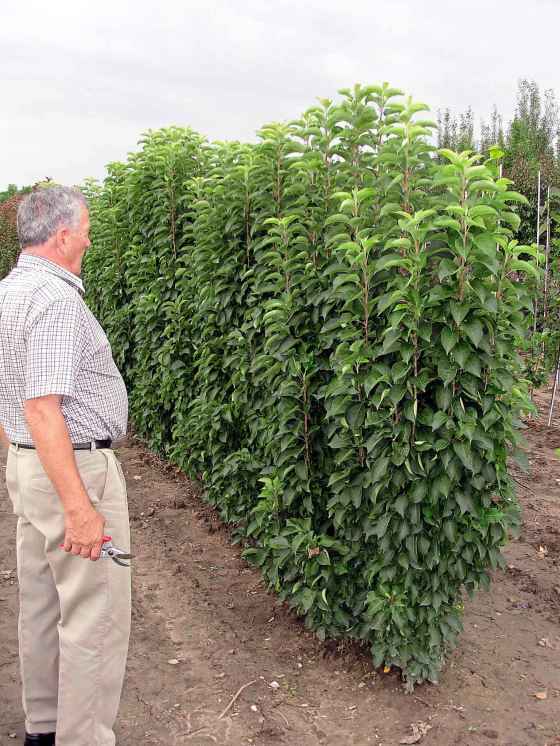
A-maze-ing: The Green Wall Flowering Crabapple, pictured here with Jeffries Nurseries founder Wilbert Ronald, is part of Martha Stewart’s maze. (Jeffries Nurseries)
“We hand-delivered the plants to her in October,” said McEnaney.
Green Wall Spire Crabapple (also known as Green Wall Flowering Crabapple) is a beautiful vertical accent. At 6.1 metres tall and just 1.8 metres wide, Green Wall is the narrowest of hardy columnar crabapples, which makes it well-suited for privacy hedges.
We always knew Martha has good taste!
Mother of all thymes
There are so many different uses in the garden for perennial thyme that is hardy to Zone 3.
Use thyme to create a very flat, dense mat of dark green evergreen foliage between stepping stones or to soften the edges of stone retaining walls.
One of my favourite uses for thyme is to plant it along the front edge of a window box or low-profile bowl. As it grows, the tiny leaves trail downward, hugging the outer walls of containers for a distinctively romantic, old-world look.
In fall, when it’s time to empty containers, lift the thyme and plant it in your garden. In spring, if you desire, it can be replanted in your container gardens.
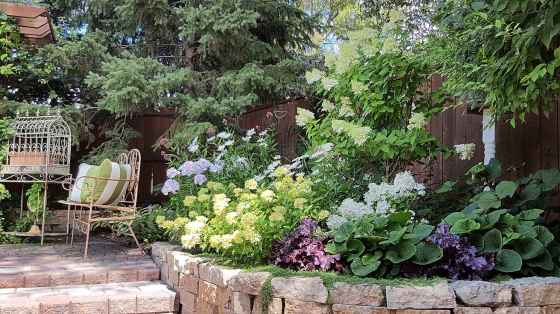
Creeping thyme softens the edge of a retaining wall. (Colleen Zacharias)
Masses of tiny blue or white flowers from June to July are a bonus.
But one of the great advantages of thyme is its emerald-coloured evergreen foliage that looks wonderful in the heat of summer as well as throughout the autumn, right up until the snow falls.
If your goal is to grow a very low mat, choose a variety of thyme such as Mother of Thyme, Magic Carpet Thyme, or Woolly Thyme, which have a mature height of no more than three to five centimetres.
While full sun is recommended, thyme also grows well in part sun to part shade. Once it is well established, it is quite drought tolerant.
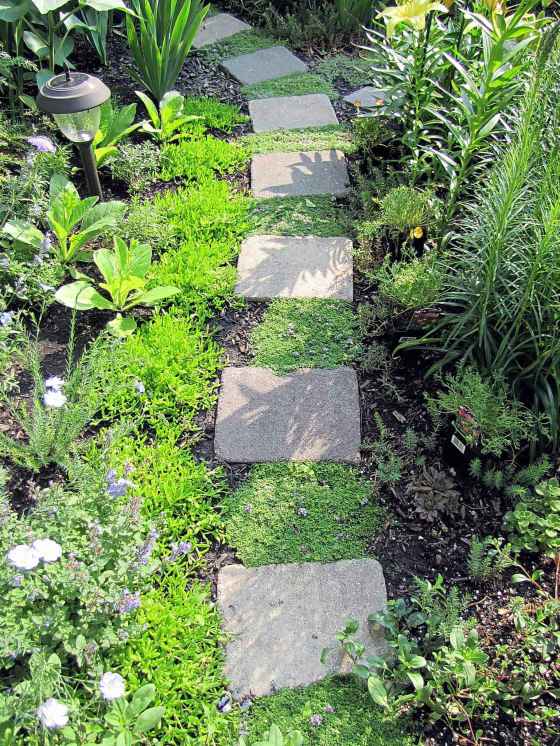
Use thyme to create evergreen foliage between stepping stones. (Colleen Zacharias)
Using Typha in the garden
My Oct. 4 column in the Free Press featured Typha, a sustainable product made from cattail stalks.
A Manitoba-made solution with ecosystem benefits to our lakes, Typha can also be used as a mulch and soil amendment.
Since cattails are bio accumulators, Brandon gardeners Deborah Petrie and Barbara-Jean Jackson wanted to know if there were any implications for garden use.
“Cattails can and do accumulate toxic chemicals from the water and soil they grow in,” said Petrie. “It would be interesting know what other nutrients and chemicals are accumulated in Typha and what implications that might have for garden use.
“Has this issue been studied or at the very least, have measurements of known pollutants in Lake Winnipeg — other than phosphorus — been assessed?”

Typha can be used as a component in potting mixes for a sustainable alternative to peat moss. (Dave Hanson)
To answer their question, I reached out to Alec Masse, co-founder of Typha Co.
“We’ve conducted lab analyses of the plant material through both Central Testing and A&L Labs to confirm that Typha is free of contaminants, including heavy metals and other concerning pollutants, prior to processing,” said Masse.
“We harvest from the same site each year — a constructed wetland previously owned by Ducks Unlimited Canada. Before every harvest, we obtain the necessary wildlife management permits from the province.
Successive harvesting positively impacts waterfowl habitat, Masse said.
“Our harvest site is also located in a nutrient hot spot according to Lake Winnipeg Foundation’s community-based water monitoring network, which means that harvesting has a greater impact in reducing total non-point sources of nutrients accumulating in Lake Winnipeg.”
They planned to start harvesting in late October.
Shaping Spaces
It’s that time of year again: the much-anticipated latest edition of The Prairie Garden is nearly available.
As Western Canada’s only gardening annual since 1937, The Prairie Garden has a wide audience of both readers and contributors from across the Northern Great Plains.
Since its inception, this annual book — which is published in Winnipeg — has been compiled by a volunteer committee.

The 2026 edition of The Prairie Garden launches Nov. 20. (The Prairie Garden)
The committee solicits a wide range of gardening and horticulture-related articles written by gardeners, plant breeders, nurserymen and nurserywomen, landscape designers, arborists, and more. It is an extraordinary year-long endeavour to compile each edition, which features a different theme as well as a guest editor.
This year’s guest editor is Mark Bauche, a landscape architect and senior associate at HTFC Planning & Design in Winnipeg.
The latest edition, Shaping Spaces, explores the different ways to design your garden. It is available in print — and, for the first time, in ebook, along with the last 26 years of editions.
The price — $19.99 — is the same for both the paperback and the ebook. Pre-orders are now open online.
Plan to attend the launch of Shaping Spaces on Thursday, Nov. 20, 6 to 8 p.m. at St. Mary’s Nursery & Garden Centre, 2901 St. Mary’s Road.
Loss of local expert leaves a void in horticulture community
Ken Land, co-owner and store manager of St. Mary’s Nursery and Garden Centre, died suddenly on Sept. 27 at the age of 68. His passing leaves a void in Manitoba’s horticulture community.
Land attended the University of Manitoba where he obtained a Bachelor of Commerce and Bachelor of Science in Agriculture.

Ken Land, co-owner and store manager of St. Mary’s Nursery and Garden Centre, died Sept. 27. (C. Land)
A former president of the Manitoba Nursery Landscape Association, Land also volunteered his time as president of the Riverview Community Centre, where he coached and served as treasurer.
But customers at St. Mary’s Garden Centre will remember Land’s quiet demeanor and ready willingness to answer their gardening questions and provide solutions.
Land’s knowledge about garden pests and plant diseases was second to none. Over the years, I went straight to Land whenever I had a question from a reader about a garden pest or plant disease or the use of a fertilizer or other garden products.
A celebration of life was held at Riverview Community Centre on Oct. 17.
Mark your calendars
On Nov. 18, Nature Manitoba will host Sichuan Spring with presenter Rudolf Koes at Westworth United Church, 1750 Grosvenor Ave., 7:30 to 8:30 p.m. The presentation will focus on the birdlife, mammals and landscape of Sichuan, China.
Tickets are $5 for members or $10 for non-members. Buy tickets on Eventbrite.
|

